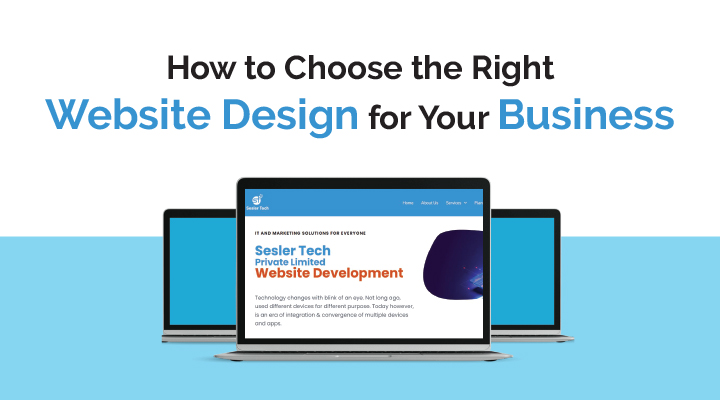A website is the first step in establishing your brand. It’s the first way people can connect with you and learn more about your business. So it’s essential to choose the right website design for your business. In this blog post, we’ll share our tips on how to select the perfect website design for your business. We’ll also cover some of the factors you should take into account when designing your websites, like target audience, branding, and design trends. Ready to start planning your website design? Let’s get started!
The importance of a good website
A good website design is key for any business. It needs to be easy to navigate, look great on all devices, and be well written. It’s also important to reflect your brand and the content on the site should be of high quality. A good website can help you attract new customers, and make your business stand out from the competition. Make sure to consult with an expert to get started on the right path, and don’t forget to keep your website updated!
Frequently Asked Questions
For businesses that want more control over the look and feel of their website, a fixed template might be the best type of design to choose. This type of design offers a more limited range of customization options, but it’s easier to manage and maintain than an eCommerce store or a hybrid design. The most popular website design among small business owners is a hybrid design that incorporates elements from both fixed and eCommerce stores. This allows businesses to have more control over the design of their website while still benefitting from the efficiencies offered by eCommerce stores. Additionally, search engine optimization (SEO) can be boosted when using a hybrid website design.
When it comes to website design, there are a few key factors you should keep in mind. These factors include search engine optimization (SEO), user experience (UX), and page performance. SEO is the practice of making your website content and on-page elements (such as titles, metatags, images, etc.) easily discoverable by search engines. This way, more users will be able to find your website, which can help improve your website’s visibility and traffic. UX is all about making sure that the interface and design of your website are easy to use, understand and navigate. It’s also important to make sure that your website looks good and performs well on all devices. Page performance is another critical factor to take into account when choosing a website design. The goal is for your website to load quickly and be visually appealing so that visitors stay on your site longer. In addition to these key factors, it’s also important to come up with a catchy name for your business and find an equally catchy logo that will represent you well.
When choosing the right web hosting plan for your new website, the first thing you’ll want to do is to consider the amount of storage space and bandwidth that you’ll need. You may also want to look into hosting plans that offer unlimited storage space and bandwidth. Next, you’ll want to make sure that your website design accommodates anticipated traffic levels and site content. Once you have a design that meets your needs, it’s important to choose a web host company that has a proven track record in hosting high-traffic websites. Traffic is one of the most important factors when choosing a web host, so make sure to consider this when making your decision.
There are a few things you can do to optimize your website for search engines. 1. Add keywords throughout the design and code. You can add them to the titles and headings of your pages, as well as in the text tags, descriptions, etc. 2. Make sure that all of your text tags, descriptions, etc., are also optimized for search engine traffic. This includes things like keyword stuffing (including multiple uses of the same word within a single sentence or paragraph), making your page look spammy, and using keywords where they don’t belong (for example, including your website’s name in the title of your blog post). 3. Keep in mind that some people prefer a more traditional website design while others focus on user experience first and foremost. This means that you may need to compromise on some aspects of website optimization for the sake of a better user experience.
Conclusion
A good website design is important for any business, small or large. A website that is well-designed can help you attract new customers, showcase your products and services, and increase brand visibility. To choose the right website design for your business, first, take into account the importance of a good website and then consult with an expert who can help you to choose the right design for a website that is both functional and appealing. Thank you for reading!




